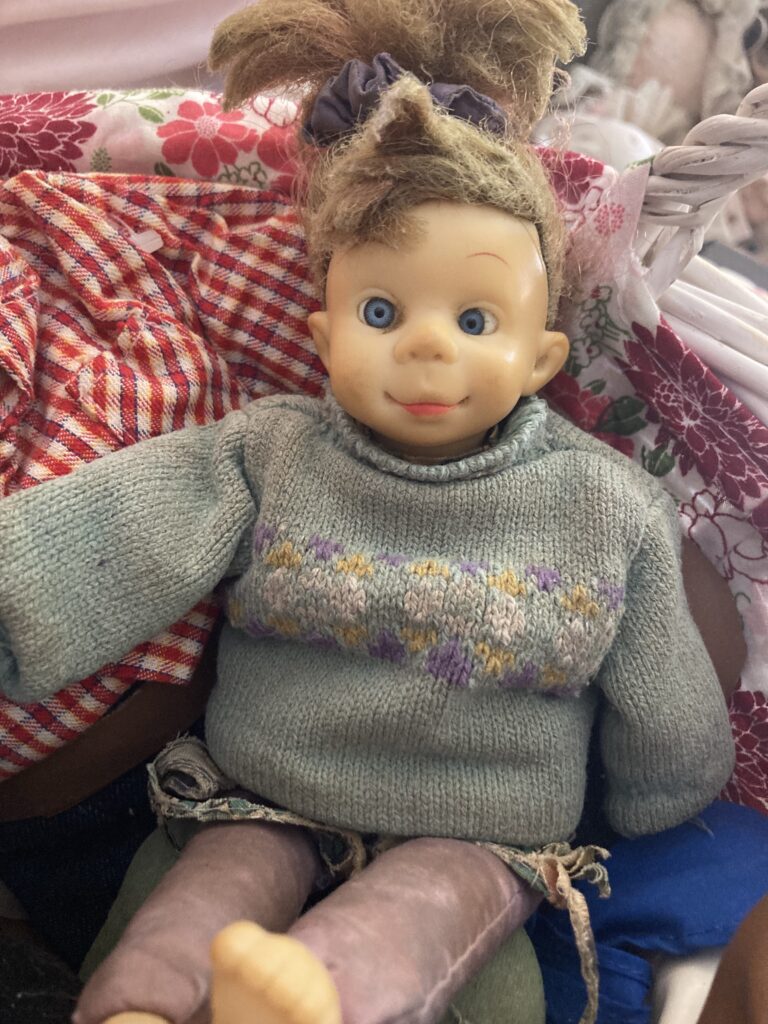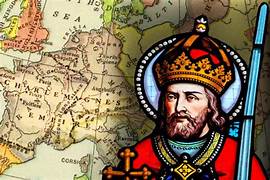
something that’s been going on for
centuries. At one point we had all of
these great conquerors. Alexander the
Great. Catherine the Great. And Peter the
Great! Genghis Khan, Atilla the
Hun! Julius Caesar! He kicked some serious [bleep]!!”
Link to the Youtube video and the rest of the series!
As her fans know, Siggie looks up to the Greats, the Terribles and even the Impalers of the past. She hopes to learn what it takes to someday make the history books herself! In Episode 4, Siggie discusses the impressive and active conquering resume of Charlemagne, or Charles the Great. He was a member of the Carolingian dynasty (actually named for him and his grandfather retroactively), a ruling family of the Frankish Empire in Western Europe. Siggie talks about his rise to power as King of the Lombards and then Emperor (named by Pope Leo III) of what would become the Holy Roman Empire.

[We know how big a fan you are of Atilla].
Yeah. [And Julius Caesar is basically your
all-time idol]. I’m jealous of him.
[Are you going to be able to muster up the enthusiasm for other people?]
Maybe.
[Well let’s give it a try. Action!] All right. So, we’re not talking about this
Guy, Charlamagne the God, the American radio personality.
I’m talking about Charlemagne from the 700s to the 800s. The name Charlemagne means
“Charles the Great.” He’s one of the Greats. You know the Terribles, the Impalers, the Greats.
Yeah this guy’s a Great. Great is synonymous with how many people you
killed, basically is what I’m finding out as I’m, you know, going on my
journeys here. Many see Charlemagne as the Father of Europe. He was the King of the
Franks. The Franks were a Germanic tribe, who set up a kingdom in Gaul, the famous Gaul, after
the fall of the Western Roman Empire. He was also the King of the Lombards and
the Emperor of the Carolingian Empire. Is that how you pronounce it? Carolingian? Yeah. This
was this guy’s identity when he became the King of the Franks from 768 to when
he took his last breath in 814. He was born in 742 in the Middle Ages in
Central Europe. He was the oldest of the first Carolingian to become king. Pepin the
Short. I giggle with that name. The Carolingian Dynasty was a Frankish Noble family, so
there was a little bit of the old nepotism at play there for Charlemagne, like
all these other guys. Attila the Hun also. They all had people proceeding them that you know
were already established as something and then they stepped in and then they
became more of what the other people were. You understand what I’m trying to
say? So, Charlemagne’s poppy, despite being super powerful and super successful as a
ruler… Pepin the short was known as the “Lesser Son” and the “Lesser Father” of two greater
men. And you know, as someone myself who kind of on the short side, I would
guess that his name didn’t exactly help him achieve a legacy of supremacy and
awesomeness.

Anyway, I digress… Charlemagne continued his father’s policy of
protecting the Office of the Pope. You’d think that being King of Franks would be
enough, right? But no… Enter the Lombards, a Germanic people who conquered most of
Italy in the 6th and 8th centuries. Charlemagne conquered them to benefit the
Catholic Church to make Italy an independent state and also most
importantly to make himself the King of the Lombards. Repeat… to make himself King
of the Lombards. Because it’s not about anything but making himself King and
then King and then King. Got it? But it didn’t stop there. To make his poppy
Pepin the Short even shorter in people’s memory, Charlemagne went on to
conquer Bavaria, Saxony and Northern Spain. Were there any other countries left
at this point? This guy was a conquering lunatic. He conquered other parts of
Europe and shades of Bloody Mary, which was much later on, he spread Christianity
everywhere he could and often not exactly gently. The Massacre of Vergen…
This was a lovely Christianizing event that happened during the Saxon Wars.
Charlemagne ordered the deaths of 4500 Saxons in 782. Charlemagne was presented in a
positive light many years later in the 20th century in Nazi Germany. Hitler and
Goebbels kind of put them on a pedestal [and Pepin the Short’s the one who should
have been put on a pedestal]. Yeah, yeah, good. Good one. So, Charlemagne was the first of the
Holy Roman Emperors. And now it’s time for me to really confuse you. The Holy
Roman Empire is not the same thing as the Western Roman Empire and yet it was
in Western Europe. Confused yet? It started in the Early Middle Ages and
lasted for almost a thousand years until 1806 when the Napoleonic Wars caused it
to not be anymore. On December 25th, 800, Pope Leo III crowned the King of the
Franks Charlemagne as Roman Emperor. In the Holy Roman Empire, emperors were
considered to be the first among equals of all Europe’s Catholic monarchs.
Charlemagne was the first ruler in Western Europe since the time of the terminator,
Atilla the Hun, and all the wars and craziness that led to the demise of the
Western Roman Empire 300 years earlier. Charlamagne essentially drew together
most of Western and Central Europe. Charlemagne’s Empire was called the
Carolingian Empire and was the forerunner of the Holy Roman Empire. Got it? So anyway…
Is that you Howdy? Howdy, get off the set. Howdy, we’re actually talking about a time
period that’s even earlier than when you were something. But what about the Byzantine
Empire or the Eastern Roman Empire, which still existed and which would keep
existing for a very long time? The Eastern Roman Empire actually lasted
until the fall of Constantinople to the Ottoman Empire in 1453. The Eastern Roman
Empire, just to put it simply, wasn’t thrilled with Charlemagne taking over the
whole planet. So. you know there was a little bit of conflict. Anyway, Charlemagne
died in 814. He was succeeded by his son, Louis the Pious. I guess I’d rather be called
“Pious” than “Short.” Following Louis, the Frankish kingdom was split into what is
now known as France and Germany.


